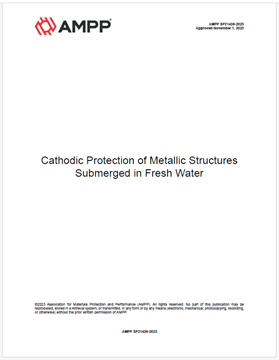Search
Products tagged with 'fresh water'
View as
Sort by
Display
per page
07260 Corrosion of Engineering Materials in Seawater, Freshwater and 3.5% NaCl Solution with Additions of Chlorine and Chlorite
Product Number:
51300-07260-SG
ISBN:
07260 2007 CP
Publication Date:
2007
$20.00
08174 Unusual Corrosion Failures of Stainless Steel in Low Chloride Waters
Product Number:
51300-08174-SG
ISBN:
08174 2008 CP
Publication Date:
2008
$20.00
AMPP SP21438-2023, Cathodic Protection of Metallic Structures Submerged in Fresh Water
Product Number:
AMPP SP21438-2023
Publication Date:
2023
$109.00
It’s Stainless Steel, We Don’t Need to Worry……Right?
Product Number:
51323-19530-SG
Publication Date:
2023
$20.00




